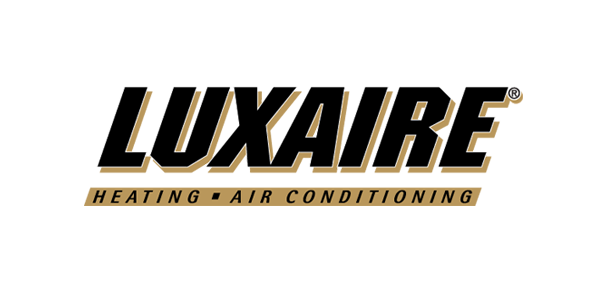Airflow Options for Rooftop Units: CV, CRSZ Control, VAV, SZVAV IntelliSpeed
Airflow Options for Rooftop Units: CV, CRSZ Control, VAV, SZVAV IntelliSpeed
When selecting an applied rooftop unit (RTU), it’s important to consider different types of air delivery systems to best satisfy the specific application. Luxaire® has several airflow options that are advantageous and effective for nearly any job application.
Constant Volume (CV)
In a simple CV system, the supply airflow rate is constant, but the supply air temperature is varied to meet the thermal loads of a space. The fan delivers constant air volume while compressor on and off staging provides varying levels of cooling to maintain Space/Zone Temperature (ST).
The main advantage of a CV system is that the equipment is not equipped with a VFD and is therefore at a lower cost point than a variable air volume (VAV) system. Additionally, the duct design is relatively simple and does not include any manual or motorized dampers within the supply or return portions of the ductwork
Variable Air Volume (VAV)
Unlike constant volume (CV) systems, which supply a constant airflow at a slightly variable temperature, VAV systems vary the airflow to maintain a constant supply of air temperature and duct pressure. VAV system will modulate both zone damper position and airflow to maintain the setpoint temperature of spaces that require conditioning. The equipment will deliver a constant SAT by having a VFD vary fan speed and stage compressors as needed.
Some advantages of VAV control include:
-
Zone/Space temperatures tend to maintain more consistent temperature and humidity levels than conventional constant volume systems.
-
Energy savings- Using VFDs to drive fans results in a potentially reduced energy consumption up to 87% when operating at 40% system airflow. Substantial energy savings over a single-speed fan.
-
Improved humidity control and space temperature.
-
Reduced airflow and compressor staging will improve space temperature and humidity levels and save energy over that of a conventional single-speed fan system.
-
Eliminates cool and hot zones that are commonly seen with constant volume systems.
Continuous Reset Single Zone Control (CRSZ Control)
The CRSZ control option provides precise control of space comfort while maximizing energy savings. In the CRSZ mode, the HVAC unit will adjust to changes seen in the space temperature due to increased or decreased cooling loads. Compressors will be staged on or off, fan speed will increase or decrease to maintain a consistent space temperature.
Some advantages of CRSZ control include:
-
Seeks to balance compressor staging and fan speed to deliver stable zone temperature and humidity control
-
Operates with minimum fan speed needed to maximize energy-saving and comfort
-
Specifiable feature – ideal for many applications
-
Based on % Demand for cooling – an algorithm developed that focuses to maintain space/zone temperature with changing load characteristics
Single Zone Variable Air Volume System (SZVAV)
In a single zone VAV unit, a variable speed fan controls the amount of airflow provided to the space by modulating the fan motor speed based on the difference between the actual space temperature (ST) and the supply air temperature (SAT). The unit uses the supply air temperature leaving the unit to determine how much cooling or heating will be required to maintain the supply air temperature setpoint.
Some advantages of SZVAV control include:
-
Lower energy use at part-load conditions
-
Better dehumidification
-
Less fan noise due to reduced fan speeds
IntelliSpeed Control (DFC)
The IntelliSpeed blower control method uses a variable frequency drive (VFD) to control staged modulation of the supply fan airflow in what is called multispeed fan control or discrete fan control (DFC). The Luxaire® Optimum™ Select RTU offers both a 2-stage and 4-stage cooling with IntelliSpeed. This feature allows for higher part-load efficiency.
Some advantages of IntelliSpeed include:
-
Improved efficiency over CV
-
Exceeds building code requirements, such as DOE 2023 (by up to 22%)
An in-depth white paper is available to help you learn about the various airflow configurations in our rooftop offering to satisfy your customer’s needs. Be sure to download the complete guide for more insightful information at https://files.hvacnavigator.com/p/dx%20rtu%20airflow%20options%20guide.pdf.
